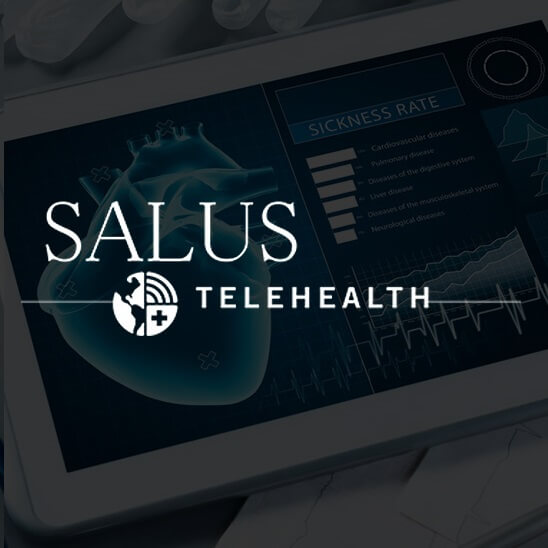In a world where the number of connected devices is growing exponentially, the Internet of Things (IoT) is continuing to change how organizations do business. IoT offers a multitude of technological advances and connectivity options for businesses. This post will explore how different types of organizations can benefit from IoT software differently.
The Value of IoT
The Internet of Things is a significant growth opportunity for businesses across various industries. It's projected to be worth 12.6 trillion dollars globally by 2030, according to the McKinsey Global Institute. IoT developers get higher salaries and are currently focused on improving IoT technology, so there's definitely a lot of potentials for IoT to improve in the future.
The primary benefit is the ability to collect and use that data to improve products, drive profitability, and enhance customer experiences. For example, a healthcare provider could gather data from patients' wearable sensors and track that data to monitor their health in real-time. The company could then use the gathered information to determine what treatments to recommend for each patient, effectively improving the quality of care they receive.
According to researchgate.net, the number of connected devices is expected to exceed 75 billion by 2025, driven by the innovation and adoption of IoT projects. An IoT customer-centric approach to project management and product development not only allows companies to collect data but also makes sense from a strategic perspective.
In this article, we'll briefly explore how different types of organizations can benefit from IoT in the areas of digital marketing, telecom, shipping, eCommerce, eLearning, banking, healthcare, agriculture, manufacturing, and automotive.
IoT in Healthcare
The healthcare industry is one of the fastest-growing industries in the world. Its growth rate is predicted to outpace most other industries, adding about 2.6 million new jobs in the United States by 2030. Some of the most significant growth areas within the healthcare industry include electronic medical records, telemedicine, and remote patient monitoring.

Video Medicine App
An IoT-enabled telehealth app that connects patients and doctors for video consultation.
Remote patient monitoring, especially when utilizing wearable devices (think Fitbits and smartwatches), offers many benefits for hospitals and patients alike.
Wearable devices can be utilized for both preventative care as well as real-time monitoring. This can help caregivers and patients identify patterns that may indicate a serious health condition before it becomes dangerous.
Similarly, electronic medical records have the potential to improve the quality of patient care. It can help optimize care delivery by providing physicians access to data that would otherwise be inaccessible.
Smart hearing aids, for example, can use sensors to monitor patients' conditions, alert caregivers, and ensure that medical staff receives alerts and warnings at all times. Similarly, intelligent insulin pumps can give users more insight into how they metabolize insulin.
IoT in Telecom
One of the largest industries that could benefit from IoT is telecommunications. Improvements in Internet speeds, accessibility, and security are expected to lead to a growth rate of 21.3% in the next decade.
When it comes to improving bandwidth and speed, wireless technologies can play a key role in improving an organization's quality of service (QoS) for telecom customers. As with healthcare, wearable devices can be utilized to deliver wireless connections for those who may not have access to traditional communication systems or signal strength.
Security is a common issue for any organization operating in the digital age. IoT can help improve cellular network security by adding more encryption and security to both voice and data traffic. This will help ensure that the communications an organization provides to the public are private and secure.
IoT in Shipping and Logistics
Shipping is another industry that stands to benefit from IoT development services. The ability to track shipments across time and space opens up a new realm of logistics for carriers. With GPS and sensors, carriers and logistics companies can monitor their shipments in real-time. This will help them identify issues before it becomes dangerous or reduces the quality of service to customers.
In addition, several trucking companies are incorporating Internet connectivity into their fleets. This allows the driver to take calls while they're moving, which will reduce potential damage on the road and improve their customer's ride experience.
Besides, these connected trucks can also alert a remote dispatcher when they're on the road. This will help reduce downtime by allowing the dispatcher to pay attention to other tasks and handle emergencies that may have been missed otherwise. These are just some benefits that a shipping & logistics company can gain from an implemented IoT system.
IoT for Marketing and CRM
When it comes to digital marketing and customer relationships management (CRM), companies will have the ability to conduct market research on a larger scale. For example, a retailer could use IoT to collect data from customers' smartphones to determine which products are being purchased. This will allow the company to identify trends in product preferences and thereby improve its marketing campaigns.

Customer Data Intelligence
Identify potential buyers across social networks, analyze campaign efficiency, and evaluate audience metrics.
Edge computing and big data processing have enabled a number of businesses to bring their internal data to the cloud through analytics. What's more, organizations are also able to use this data to target and recruit customers more, as well as create personalized experiences.
In another instance, a Web content provider could use IoT to monitor page views from its website by utilizing wearables or apps installed on mobile devices. This will allow the prices to be lower so that it can attract as much business as possible.
Customer feedback is also another excellent use for IoT. Call centers and other customer service members can receive customer feedback from wearables or apps installed on their phones, which will allow them to resolve more issues and reduce the time that is spent on answering phone calls.
IoT for eCommerce Organizations
Over the past decade, electronic commerce has grown rapidly. eCommerce sales reached the mark of 14.3 percent of total sales in the United States in Q1, 2022. According to IBM, by 2025, there will be a 25% increase in global IoT spending on e-commerce-related initiatives.
When implementing IoT into an eСommerce organization's business model, there are key selling points that would help attract new customers and grow its market share.
The first of these is the addition of voice search features. In an age where an increasing number of people are opting for voice search over traditional text searching, it would be beneficial to offer access to both options. This can be done through virtual assistants like Amazon Alexa or Google Home that integrate with IoT-connected devices in various locations within a business.
In addition, customer loyalty can be improved by implementing IoT into an e-commerce platform. Customers will be able to use their devices to track their order histories. This will help them identify what products they like and which ones they don't. It can also help publicize special promotions and discounts in the business.
IoT in Banking and Fintech
As with any industry, banks and financial organizations constantly seek new technology advancements to make it easier for customers and employees. For banks, IoT translates into making it easier for customers to open accounts and to provide greater access to digital services. IoT can help banks and fintech companies provide greater security and convenience around account management.

Loan Lending App
An instant loan app to get money fast straight from Android and iOS.
For example, a bank can use IoT to provide a digital assistant for customers to help them with account management. This can be particularly beneficial for those who may have difficulty managing their finances due to infirmity or disability.
Banks can also use IoT to determine the creditworthiness of their potential customers. This will help mitigate risk and help provide better personalization of services by offering specific products relevant to each customer's unique financial needs and goals.
IoT for Manufacturing and Industrial Automation
IoT in industrial automation can yield tremendous productivity gains for manufacturing industries. For example, real-time monitoring of assembly lines can help reduce defects by alerting employees and managers to potential issues before they become dangerous. This will reduce waste and help keep products affordable for consumers.

Ignition Impact
Database integration, networking architecture, component libraries, SCADA design, hardware integration.
Similarly, IoT can be used to monitor inventory levels of products at each stage of the assembly line. This will help reduce the rate of overproduction and improve the overall cost structure of the organization.
Besides, IoT can also help optimize the flow of processes within the manufacturing industry. For instance, by using IoT in the supply chain, managers can identify potential bottlenecks and use data to develop solutions. This will help keep costs down while improving throughput and quality.
IoT in eLearning
Due to the global pandemic, eLearning has the potential to become one of the largest sectors in education over the next few years. It is estimated that by 2025, as many as 65% of Americans will be using eLearning. This translates into a market expected to reach $216 billion U.S. dollars by 2025.

E-learning web portal
"Thanks to Intersog dev team, we are now able to support multiple web products for different market segments using a single platform."
However, due to a variety of factors, including limited access to IT tools and information technology resources, many distant learners still fail to complete their courses because they are unable to stay connected with their teachers or peers. With the help of IoT technologies, this will become a realistic possibility very soon.
IoT in Automotive
In the automotive industry, IoT has the potential to make driving safer, more convenient, and environmentally friendly. For example, a car that knows when and where its owner is going can be programmed to take routes allowing the driver to avoid traffic and other hazards. This also helps reduce fuel expenses because it allows the car's systems to switch off when they aren't needed.

Supply Chain Solution
Helping Mitsubishi Motors migrate from its legacy system to take supply chain management to a new level.
Tesla, Mitsubishi, Honda, and other car manufacturers can also use IoT technology to communicate with their vehicles. By feeding all of their data into an IoT application, they can track real-time vehicle conditions such as temperature and pressure within the car's cabin. This can help keep drivers safer by giving them a heads-up about an issue with the car.
Tesla integrates Alexa and Google Home into their electric vehicle (EV) cars. As a Tesla owner, you can access a real-time dashboard that shows information about the car's driving, energy, climate, and other systems. This IoT technology optimizes the comfort and convenience of Tesla cars.
IoT in Oil and Gas
From the oil extraction process to transportation to refining, IoT is already having a tremendous impact on the oil and gas industry. Using intelligent sensors in the extraction process can ensure that no oil is left behind by tracking how much has been extracted at any given time. These sensors can then provide real-time updates on how long it will take for extraction to be completed. This real-time data can help minimize the risk of oil spills and other environmental hazards associated with petroleum extraction.
Similarly, intelligent sensors and tracking devices can be used to track the transportation process from oil extraction to the refinery where it will be processed. These tracking devices can identify potential hazards along the transportation route that may impact safety and quality. Smart sensors can also help transport vehicles utilize less fuel.
Finally, IoT devices can help optimize refinery processes with real-time monitoring of inputs (like crude) and outputs (like gasoline). Real-time data analysis can help reduce waste while maximizing profits.
IoT in Agriculture
Thanks to the advent of indoor farming and vertical hydroponic growing, we have seen a resurgence in food production over the past several years. There are many ways that IoT can help with this process and ensure quality, freshness, and safety.
One growing trend is using drones to help crop monitoring in indoor environments. These drones can be used to monitor temperature, air quality, light, and water levels which can ensure that your crops are safe and healthy at all times. In addition, if a problem like a temperature spike or excess moisture is identified, the drone can alert an indoor farmer, letting them know that they need to take action.
Another common trend in outdoor farming is the addition of IoT-enabled irrigation systems. These irrigation systems can monitor soil levels and moisture at regular intervals so that farmers don’t have to manually monitor their fields to determine when it’s necessary to water.
IoT in Architecture and Construction
In the construction industry, many projects are powered by sensors and weather monitoring systems. Some of these IoT-enabled devices include:
- Sensors embedded in roadways to monitor traffic
- Sensors embedded in asphalt can monitor temperature and air quality
- Sensors placed on the bottom of bridges and other structures to detect corrosion
- IoT-enabled weather monitoring systems that can send alerts whenever a storm is predicted, giving workers warning to retreat to safety before any damage is done.
- Sensors embedded in construction equipment to help prevent accidents and manage workloads
Construction companies should consider adding IoT technology to these devices for several reasons.
- They can be programmed to respond to almost any situation that may arise on a construction site.
- They are the most reliable and safe way to power critical equipment and other assets on a construction site.
- Because they have connectivity, they can automatically report any potential problems before they happen. These types of solutions serve as excellent preventative measures against accidents as well as proactive safeguards.
- They can reduce downtime and help workers keep their equipment running smoothly without being there to man the equipment.
A robust IoT strategy can provide architects and engineers with the data they need to stay current on their projects. This will help reduce their costs, maintain quality and increase productivity for the people building the infrastructure for these buildings.
Wrapping Up
IoT is the future. In many ways, it is the present. Most people have IoT devices in their homes, cars, and businesses. Some of these IoT devices, like security systems, are pretty complex. However, there are still many simple devices that can have a tremendous impact on your business or organization without taking too much time or money to implement.
The most important thing to remember when integrating IoT technology into your organization is to keep it simple and easy to use. Intersog has been in IoT software development for years. We built great applications and firmware for healthcare, automotive, fintech, crypto, and other organizations. Contact us if you want to hire IT people for your IoT project.






